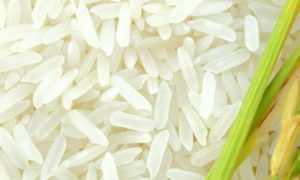Nepal’s foreign trade hits Rs2 trillion, driven by edible oil re-export boom

Nepal’s foreign trade hit Rs2 trillion, driven by a 1,537% surge in edible oil exports—mostly re-exports of imported crude oil refined and sent to India. While boosting short-term revenue, experts warn this growth is unsustainable, lacks industrial depth, and exposes Nepal to economic and exchange rate vulnerabilities.
Nepal’s annual foreign trade volume crossed the Rs2 trillion mark for the second time, equalling the country’s yearly budget. This record-breaking surge is primarily attributed to an exponential growth in edible oil exports—a product Nepal does not produce in significant quantities but whose exports have multiplied several-fold in just one year.
Exports of refined soybean oil, sunflower oil, and palm oil soared by 1,537 percent—more than 15 times—compared to the previous fiscal year.
This rise in edible oil exports has also reshaped Nepal’s trade dynamics. Argentina has emerged as Nepal’s third-largest trade partner, replacing the United States, primarily due to the spike in imports of crude edible oil.
The import surge was also driven by increased food and cereal imports from India after it lifted its ban on several commodities, particularly rice and wheat.
In the last fiscal year, Nepal’s imports totalled Rs1.80 trillion, a 13.25 percent increase year-on-year. Exports jumped by 81.8 percent to Rs277 billion in the same period.
A closer look at the data shows that edible oils accounted for nearly half of Nepal’s total exports.
Of the Rs277.03 billion worth of exported goods, refined edible oils contributed Rs121.53 billion. The remaining Rs155.5 billion came from all other products combined.
Nepal exported 576,563 tonnes of refined soybean, sunflower, and palm oils almost entirely to India.
The country imported 958,901 tonnes of crude palm, sunflower, and soybean oil valued at Rs144.79 billion to support these exports. The government earned Rs9.29 billion in import duties from these crude oil imports.
Trade analysts point out how Nepali traders have been exploiting the zero-tariff privilege extended under the South Asia Free Trade Area (SAFTA). Though the government is aware of this practice, it has stayed silent, largely because it collects revenue from imports and exports that in turn helps cut the growing fiscal deficit.
A separate report has indicated that large Indian trading houses are key players behind Nepal’s booming edible oil export market.
Concerns over possible tariff evasion have surfaced, with allegations that some traders are routing crude edible oil through Nepal to avoid Indian customs duties.
In a recent interview, trade expert Rabi Shankar Sainju told The Post that this trend presents serious macroeconomic vulnerabilities.
“Nepal imports crude edible oil in US dollars and exports the refined version in Indian rupees. This exposes the country to exchange rate risks,” Sainju said.
Economist Chandramani Adhikari echoed similar concerns, calling the export growth “artificial and shallow.” He added, “The so-called increase in exports—especially edible oil—neither contributes to real industrial growth nor represents sustainable trade. The government is celebrating the numbers without acknowledging the fragility behind them.”
Adhikari further criticised Nepal’s import structure, which continues to be dominated by consumables and finished goods—items that add little value to long-term economic growth.
“Only about 35 percent of industries are currently operational. The manufacturing sector’s contribution to GDP has shrunk to around 5 percent from 9 percent a few years ago. The overall industry contribution to GDP has declined from 19 percent to 13–14 percent,” he said. “This shows how little the government cares about boosting domestic economic activity.”
According to Adhikari, policymaking in Nepal suffers from a lack of serious research and coordination.
“Policies are drafted without rigorous study. No concrete action plans are created to implement them. Nor is there investment in technology that could enhance production and boost exports. There is a clear disconnect between fiscal, export, and monetary policies. That disconnect is a reason why trade continues to underperform in structural terms.”
He added that while top bureaucrats are preoccupied with issues like “cooling-off periods,” they seem uninterested in the country’s pressing economic challenges.
Nepal’s edible oil exports to India began to surge after India raised the basic import duty on crude and refined edible oils by 20 percent last September to protect its local oilseed farmers. While the move aimed to benefit Indian farmers, it inadvertently created an opportunity for Nepali refiners and exporters, who rushed to fill the price gap in the Indian market, resulting in a sharp rise in soybean oil shipments.
However, during this period, most of Nepal’s edible oil exports were re-exports: imported crude oil processed and packaged in Nepal and shipped to India.
Trade experts argue that this model has generated windfall profits for a handful of business groups without creating real industrial capacity or jobs in Nepal. “It does not strengthen the national economy and cannot be viewed as a sustainable trade practice,” they say.
In June, the Indian government introduced a new policy to slash retail prices and protect domestic refiners. It halved the customs duty on crude palm, soybean, and sunflower oils from 20 percent to 10 percent.
Experts believe this will significantly reduce Nepal’s edible oil exports, which had benefited from duty-free access under SAFTA. The revised tariffs now favour Indian refiners and threaten to wipe out the competitive advantage Nepali traders briefly enjoyed.
Despite the challenges, India remained Nepal’s largest trading partner. Nepal exported Rs224.68 billion worth of goods to India and imported Rs1.07 trillion, resulting in a trade deficit of Rs846.51 billion.
China was Nepal’s second-largest trading partner. Nepal exported goods worth Rs2.63 billion to China, while imports from China stood at Rs341.10 billion.
Argentina rose to third place due to the surge in edible oil imports, with Nepal importing goods worth Rs99.30 billion, primarily crude soybean oil. By contrast, Nepal’s exports to Argentina amounted to only Rs3.35 million.
The United States slipped to fourth position. Nepal exported goods worth Rs18.32 billion to the US while importing Rs25.96 billion.
Nepal’s top imported goods included petroleum products, crude edible oils, iron and steel, machinery and mechanical appliances, electrical equipment, automobiles, plastics, cereals, pharmaceutical products, and vegetables.
Top export items included edible oils, readymade garments, iron and steel products, coffee, tea, spices, carpets, wood products, animal feed preparations, clothing accessories, processed fruits, vegetables, and yarn.
To Read more about Edible Oil News continue reading Agriinsite.com
Source : The Kathmandu Post














